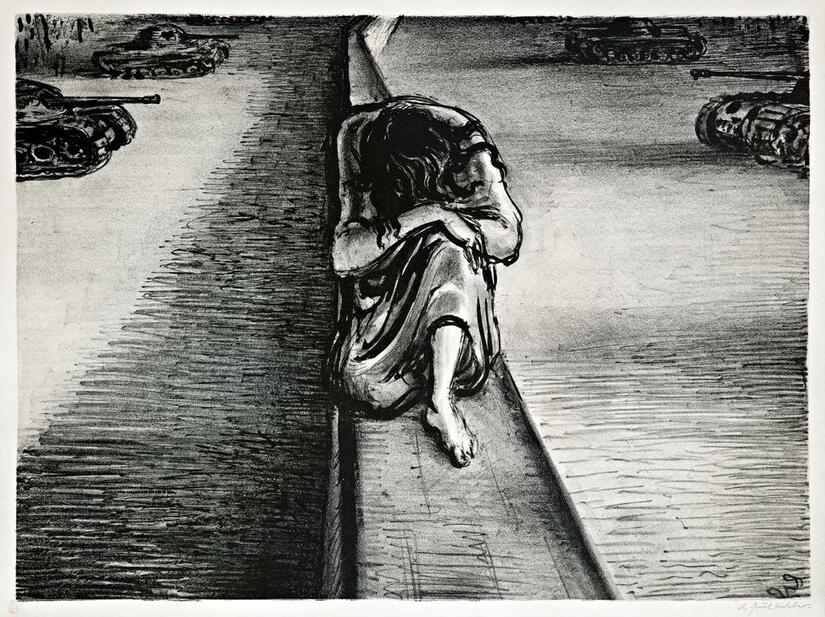A. Paul Weber: Die Mauer, 1991 (The Wall)

Lithography, 92 x 72 cm
In this lithography, A. Paul Weber shows the horrors of the division of Germany from 1949 to 1990 and at the same time the new rift in Europe in a striking and catchy way. Both resulted from the Second World War. A striking symbol of this division was "the wall", where the member states of the Warsaw Pact, under the leadership of the then Soviet Union, and the U.S.-dominated NATO faced each other, not only symbolically. The division of Germany into the former German Democratic Republic (GDR) and the Federal Republic of Germany (FRG) and Europe in general was a research focus of the Social Science Research Institute (SFI) at the Europäische Akademie Otzenhausen. Thus, the academy dealt with the topic "first hand", on which it organized numerous international conferences and published books.
The direct confrontation between American and Soviet troops depicted in this picture did indeed take place: On October 27, 1961, at Checkpoint Charlie in Friedrichstrasse in Berlin, 30 battle tanks each of the American and Soviet armies pitted themselves against each other directly on the border strip. However, the catastrophe in the densely populated city, possibly followed by a nuclear war, could be avoided, because both tank groups were recalled the following day. For many younger people today, the fear of a new war, which this image conjures up, is fortunately hardly comprehensible in everyday life. For the older ones, however, it was very real for decades, as was the strict separation of people on both sides of the "Iron Curtain". Their life and worlds were shaped by the existence in a democracy or in socialism and therefore very different. The long-term consequences can still be felt in the European Union, for example in the varying living conditions and sometimes different political priorities of the "old" and "new" member states.
A. Paul Weber (Andreas Paul Weber, *1893 in Arnstadt, †1980 in Schretstaken, both in Germany) was a German lithographer, illustrator and painter who left behind an extensive contemporary and satirical portfolio. Among the subjects which he illustrated with a sharp pen, were National Socialism, politics, the environment and medicine. He was committed to anti-fascism already in the era of National Socialism, imprisoned in Hamburg-Fuhlsbüttel concentration camp as co-editor of the magazine "Widerstand" (Resistance) and later served time in prisons in Berlin and Nuremberg.
Even after the war, he continued his anti-fascist commitment.